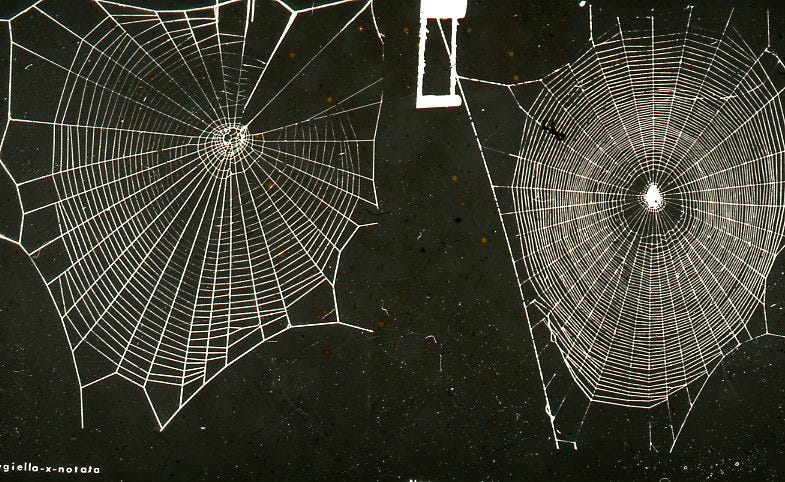On Spiders, Drugs, and Poetry
Dr Peter Witt and his drug experimentation with spiders
This article by historian Robert Dickins was first published in the Psychedelic Press journal, issue XXXVI. Subscribe to future print issues here.
The spider is a potent subject in poetry. Whether it be the creative genius of the webbing God-poet in Emily Dickinson’s ‘A Spider Sewed at Night’ or the Zen-like architect preparing for its prey, ‘Surrounded, detached, in measureless oceans of space’ in Walt Whitman’s ‘A Noiseless Patient Spider’, our eight-legged friend cuts a cool, measured character—a master of art weaving threads of life and death.
Indeed, so regular and precise is the rhythm of itsy-bitsy spider’s web artistry that they also make intriguing scientific subjects—for deviation in a well-established pattern is a desirous data-point in nature’s disclosures. Yet how to prompt such deviation? LSD, perhaps? We may learn something of the spider, how ‘His Strategy Was Physiognomy’ as Dickinson wrote, or perhaps we may learn about tripping: the poetry arising where subject and LSD…


